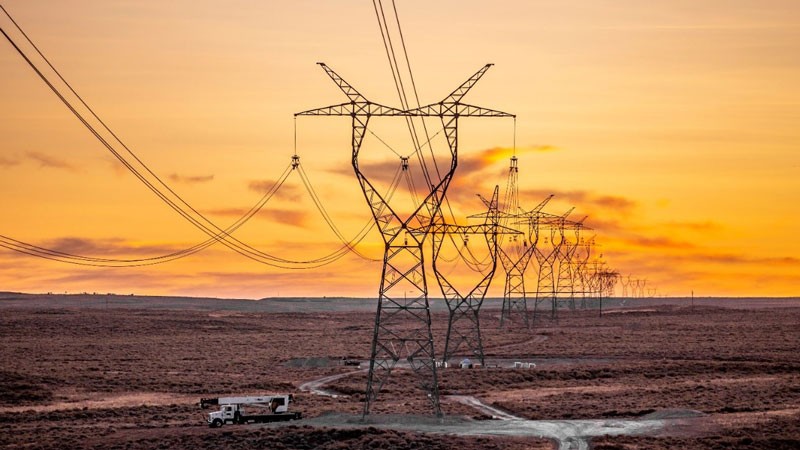New Rocky Mountain Power rates support Wyoming’s future

CHEYENNE, Wyo. — The Wyoming Public Service Commission approved new rates for Rocky Mountain Power customers, following an extensive review that began last year. Overall, customer bills will go down an average of 3.5 percent as the remaining benefits of the federal Tax Cuts and Jobs Act of 2017 are passed through to customers over the next three years.
In a separate decision, the commission approved a decrease of 2.4 percent in the company’s annual Energy Cost Adjustment Mechanism on an interim basis. The energy cost adjustment tracks the difference between forecast and actual power costs, which include the costs of fuel and purchased power.
Together, the average net price change from the general rate review and the energy cost adjustment is an average 5.9 percent decrease. Both changes are effective July 1.
On average, residential customer bills will decrease 3.1 percent as a result of the order. A typical residential customer using 660 kilowatt-hours per month will save about $25.44 on their annual energy bill. Large industrial customers, representing more than 60 percent of the electrical usage in Wyoming, will see decreases of 8.0 percent for Schedule 46, large general service; and 8.4 percent for Schedule 48T, transmission voltage.
As the lowest-cost major electric utility in the Intermountain West, Rocky Mountain Power's average electric rate is more than 10 percent lower than the average price in Wyoming and 34 percent lower than the national average. Rocky Mountain Power’s continuing prudent and efficient management of system resources means customers will continue to see rates that are even lower than the company’s prices in 2017, before reductions from federal tax reform were passed on to customers—and well below the rate of inflation over that time.
“Wyoming enjoys some of the most reliable and affordable power in the nation, making the state a very attractive destination for companies looking for a competitive advantage,” said Sharon Fain, Rocky Mountain Power vice president for Wyoming. “Our future plans will continue to provide Wyoming and her communities with a competitive edge, the right tools and strategy to achieve the best outcome.”
Fain explained that the benefits of the federal Tax Cuts and Jobs Act of 2017 will continue for the next three years, helping to offset the costs of prudent and vital investments made during the past five years of rate stability.
“Between now and then,” Fain said, “Rocky Mountain Power will continue to aggressively control its costs, plan for a safe, reliable, modern electric system and work hard to maintain the company’s position as one of the lowest-cost energy providers in the nation.”
After five years of steady investment without raising prices, the new rates include implementation of Rocky Mountain Power’s Energy Vision 2020 renewable energy and transmission initiative as well as the repowering of the company’s existing wind projects, all of which extend Wyoming’s strong history of being the nation’s leading energy producer. These investments in Wyoming nearly doubled the amount of renewable energy capacity available to serve customers while also decreasing emissions and are expected to save customers several hundred million dollars compared to alternatives.
Other items included in the rate change are Wyoming’s share of the costs to convert Naughton Unit 3 to natural gas, the installation of selective catalytic reduction retrofits on certain generating units, and new rate designs for Wyoming customers that will more fairly reflect costs across different usage levels. A new time-of-use pilot program will also help participating customers save money if they move a significant portion of their energy use outside of daily peak demand hours of 7 a.m. to 9 a.m. and 5 p.m. to 11 p.m. The pilot program is open to the first 500 customers who sign up.
It costs more than $660 million dollars annually to provide electric service to Rocky Mountain Power’s Wyoming customers. The commission’s order approved an increase of approximately $7.0 million, or 1.1 percent, to Rocky Mountain Power’s existing rates in Wyoming. The increase is mitigated by passing on to customers $29.9 million, including interest, from the federal Tax Cuts and Jobs Act of 2017 to customers over the next three years. This will appear as a credit on customer bills as: Schedule 197 Federal Tax Act Adjustment.
Rocky Mountain Power continues to invest in Wyoming, with newly completed projects that amount to more than $2.6 billion across the state. The Energy Vision 2020 new wind and transmission projects are mostly located in Wyoming, generating additional, welcome revenue and supporting economic growth and development throughout the state. The Energy Vision 2020 projects are projected to deliver approximately $70 million in sales and use tax revenues during construction and generate approximately $11 million in annual property tax beginning in 2021, and incremental wind production taxes of approximately $3 to $4 million annually.
These investments diversify Wyoming’s energy supply and deliver cost-effective energy, while providing economic benefits to customers that also accrue to counties and the state. Investments like Energy Vision 2020 help ensure that Wyoming electricity prices remain low and competitive, which allows Wyoming to remain competitive when it comes to attracting new business and industry.